Results
-
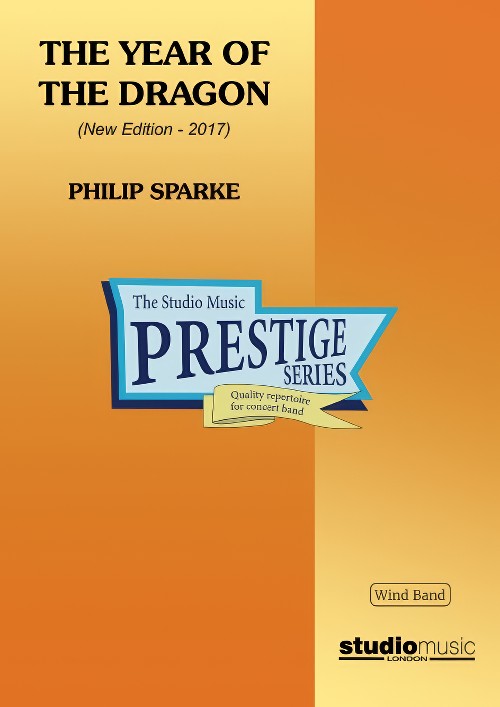 £37.95
£37.95The Year of the Dragon (Prestige Concert Band - Score only) - Sparke, Philip
The 2017 version of The Year of the Dragon was commissioned by the Siena Wind Orchestra and given its world premiere on June 17th 2017 in Bunkyo Civic Hall, Tokyo, conducted by the composer.The original wind band arrangement of The Year of the Dragon was made in 1985, a year after the composer wrote the brass band version. At that time he was still learning the intricacies of writing for wind band (and still is!) and in the 32 years which have elapsed since then, his approach to scoring for the medium has developed and, hopefully, improved.Here are the main differences between the two versions:In the 1980's, the wind band movement was much less international than it is now. British wind bands were still to some extent based on the military band tradition of the time, which tended to use rather smaller instrumentation than the then-dominant American university model. The new version embraces a much more international instrumentation, including low woodwinds and string bass, as well as an expanded percussion section.In the original version there was a touch of naivety in the way the composer wrote for the woodwinds; much of their articulation was transferred too literally from the brass version, resulting in some unidiomatic writing, which he has tried to improve in the new version.In addition to the above, Philip's own compositional style has matured and developed in the intervening 32 years. There are some passages in the original which he simply would not write today - not because they are 'wrong', but because his way of writing has changed. The new version is perhaps how he would have written it today, rather than simply dressing the original version in new clothes.The work is in three movements:Toccata opens with an arresting side drum figure and snatches of themes from various sections of the band, which try to develop until a broad and powerful theme from the middle of the band asserts itself. A central dance-like section soon gives way to the return of this theme, which subsides until faint echoes of the opening material fade to a close.Interlude takes the form of a sad and languid solo for alto saxophone. A chorale for the whole band introduces a brief spell of optimism but the saxophone solo returns to close the movement quietly.Finale is a real tour-de-force for the band with a stream of rapid semi-quavers running throughout the movement. The main theme is heroic and march-like but this is interspersed with lighter, more playful episodes. A distant fanfare to the sound of bells is introduced and this eventually returns to bring the work to a stirring close.
Estimated dispatch 7-14 working days
-
 £199.95
£199.95The Year of the Dragon (Prestige Concert Band - Score and Parts) - Sparke, Philip
The 2017 version of The Year of the Dragon was commissioned by the Siena Wind Orchestra and given its world premiere on June 17th 2017 in Bunkyo Civic Hall, Tokyo, conducted by the composer.The original wind band arrangement of The Year of the Dragon was made in 1985, a year after the composer wrote the brass band version. At that time he was still learning the intricacies of writing for wind band (and still is!) and in the 32 years which have elapsed since then, his approach to scoring for the medium has developed and, hopefully, improved.Here are the main differences between the two versions:In the 1980's, the wind band movement was much less international than it is now. British wind bands were still to some extent based on the military band tradition of the time, which tended to use rather smaller instrumentation than the then-dominant American university model. The new version embraces a much more international instrumentation, including low woodwinds and string bass, as well as an expanded percussion section.In the original version there was a touch of naivety in the way the composer wrote for the woodwinds; much of their articulation was transferred too literally from the brass version, resulting in some unidiomatic writing, which he has tried to improve in the new version.In addition to the above, Philip's own compositional style has matured and developed in the intervening 32 years. There are some passages in the original which he simply would not write today - not because they are 'wrong', but because his way of writing has changed. The new version is perhaps how he would have written it today, rather than simply dressing the original version in new clothes.The work is in three movements:Toccata opens with an arresting side drum figure and snatches of themes from various sections of the band, which try to develop until a broad and powerful theme from the middle of the band asserts itself. A central dance-like section soon gives way to the return of this theme, which subsides until faint echoes of the opening material fade to a close.Interlude takes the form of a sad and languid solo for alto saxophone. A chorale for the whole band introduces a brief spell of optimism but the saxophone solo returns to close the movement quietly.Finale is a real tour-de-force for the band with a stream of rapid semi-quavers running throughout the movement. The main theme is heroic and march-like but this is interspersed with lighter, more playful episodes. A distant fanfare to the sound of bells is introduced and this eventually returns to bring the work to a stirring close.
Estimated dispatch 7-14 working days
-
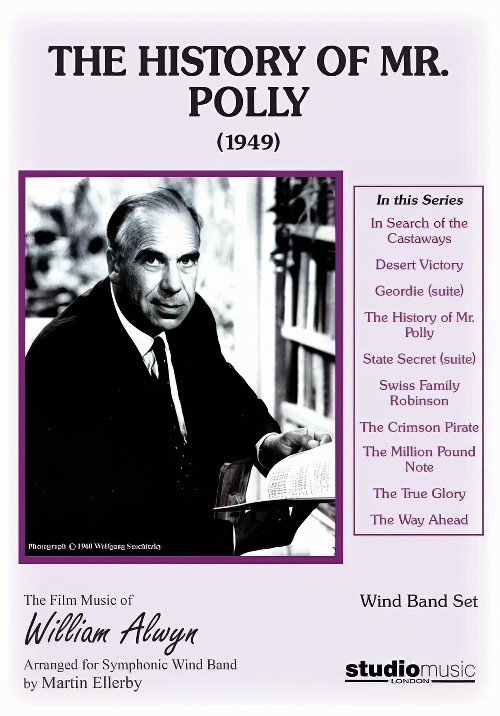 £124.95
£124.95The History of Mr Polly (Concert Band - Score and Parts) - Alwyn, William - Ellerby, Martin
William Alwyn (1905-1985) studied at the Royal Academy of Music where, at the age of 21, he was appointed Professor of Composition - a position he held for nearly thirty years. Apart from his vast output of serious music he contributed nearly 200 scores for the cinema. Starting, mainly with documentaries he wrote his first full feature-length score in 1941.The film, The History of Mr Polly, is based on the novel by H.G. Wells. Mr Polly is a sensitive daydreamer and has a lifestyle leading him into many difficult situations.Alwyn's music portrays many of these calamities and each one is represented as a movement in this suite:The Wedding and Funeral (his father's)FireChristabelPunting SceneUtopian SunsetA truly memorable fulm in every respect.
Estimated dispatch 7-14 working days
-
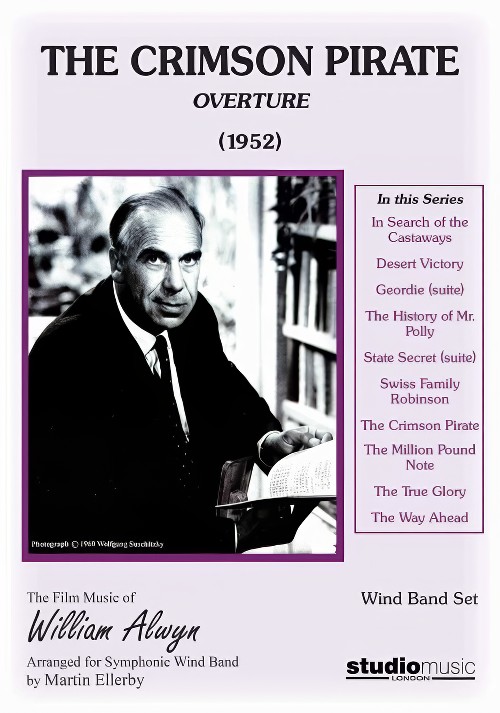 £87.95
£87.95The Crimson Pirate (Concert Band - Score and Parts) - Alwyn, William - Ellerby, Martin
William Alwyn (1905-1985) studied at the Royal Academy of Music where, at the age of 21, he was appointed Professor of Composition - a position he held for nearly thirty years. Apart from his vast output of serious music he contributed nearly 200 scores for the cinema. Starting, mainly with documentaries he wrote his first full feature-length score in 1941.The Crimson Pirate (1952) has music written in the form of an overture. As the title suggests the film was a swashbuckling adventure with romance thrown in for good measure. As always, Alwyn's music echoed the action on the screen!
Estimated dispatch 7-14 working days
-
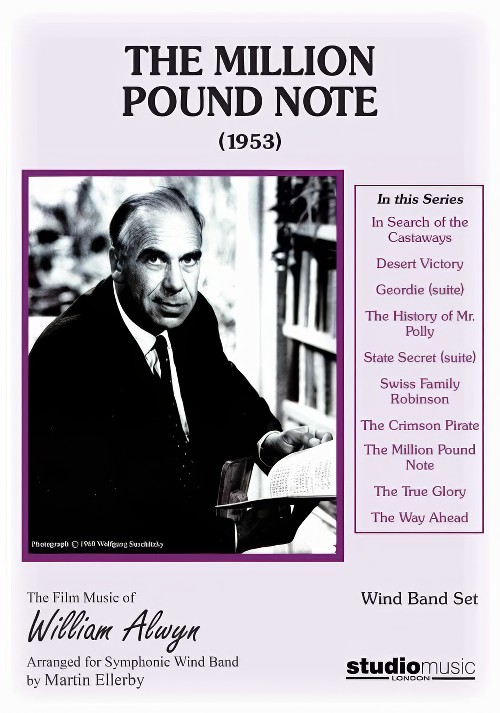 £74.95
£74.95The Million Pound Note (Concert Band - Score and Parts) - Alwyn, William - Ellerby, Martin
William Alwyn (1905-1985) studied at the Royal Academy of Music where, at the age of 21, he was appointed Professor of Composition - a position he held for nearly thirty years. Apart from his vast output of serious music he contributed nearly 200 scores for the cinema. Starting, mainly with documentaries he wrote his first full feature-length score in 1941.The Million Pound Note (1953) was based on a story by Mark Twain Set in Victorian times. For the main theme, Alwyn wrote this charming waltz with a stylish Victorian flavour.
Estimated dispatch 7-14 working days
-
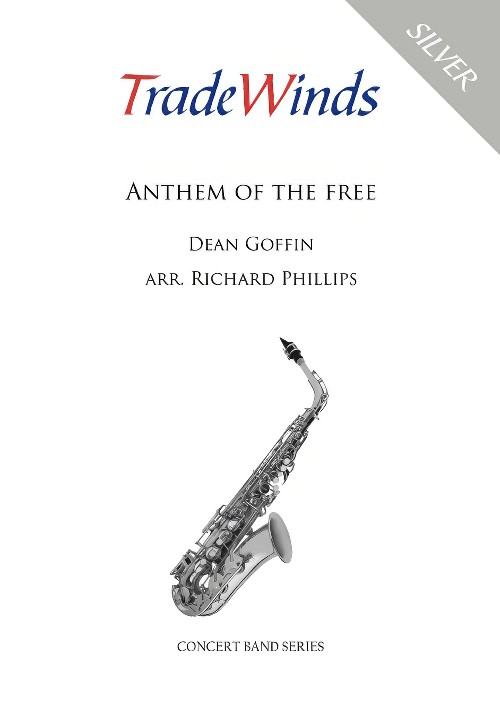 £39.95
£39.95Anthem of the free (Concert Band - Score and Parts) - Goffin, Dean - Phillips, Richard
New Zealand born, Sir Dean Goffin, was son of composer Henry Goffin who has previously been featured in this series as he composed the march - The Red Shield. Dean was a Salvation Army Bandmaster before enlisting into the New Zealand armed forces during the 2nd World War. He became Bandmaster of the newly formed band of the 20th Infantry Battalion and later on the 4th Infantry Battalion. Whilst he was serving in the Middle East he composed this march initially under another name 'Bel Hamid' The march was later adapted and renamed 'Anthem of the Free'.
Estimated dispatch 7-14 working days
-
 £7.95
£7.95Anthem of the free (Concert Band - Score Only) - Goffin, Dean - Phillips, Richard
New Zealand born, Sir Dean Goffin, was son of composer Henry Goffin who has previously been featured in this series as he composed the march - The Red Shield. Dean was a Salvation Army Bandmaster before enlisting into the New Zealand armed forces during the 2nd World War. He became Bandmaster of the newly formed band of the 20th Infantry Battalion and later on the 4th Infantry Battalion. Whilst he was serving in the Middle East he composed this march initially under another name 'Bel Hamid' The march was later adapted and renamed 'Anthem of the Free'.
Estimated dispatch 7-14 working days
-
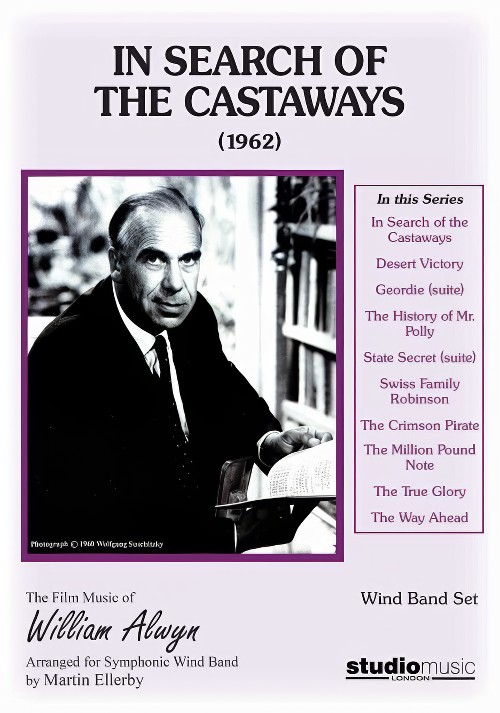 £94.95
£94.95In Search of the Castaways (Concert Band - Score and Parts) - Alwyn, William - Ellerby, Martin
William Alwyn (1905-1985) studied at the Royal Academy of Music where, at the age of 21, he was appointed Professor of Composition - a position he held for nearly thirty years. Apart from his vast output of serious music he contributed nearly 200 scores for the cinema. Starting, mainly with documentaries he wrote his first full feature-length score in 1941.In Search of the Castaways (1962) was his third score for the Walt Disney Company, and starred Hayley Mills and Maurice Chevalier. This suite includes a lilty waltz and a lively rumba keeping the percussion section busy!Duration: 5:45
Estimated dispatch 7-14 working days
-
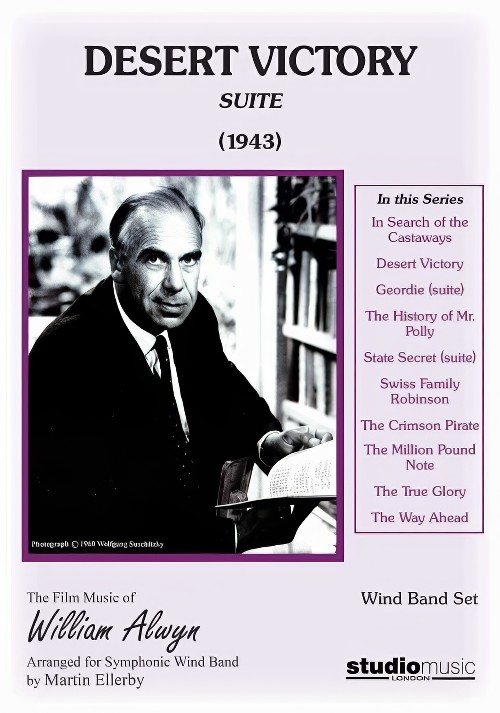 £94.95
£94.95Desert Victory (Concert Band - Score and Parts) - Alwyn, William - Ellerby, Martin
William Alwyn (1905-1985) studied at the Royal Academy of Music where, at the age of 21, he was appointed Professor of Composition - a position he held for nearly thirty years. Apart from his vast output of serious music he contributed nearly 200 scores for the cinema. Starting, mainly with documentaries he wrote his first full feature-length score in 1941.
Estimated dispatch 7-14 working days
-
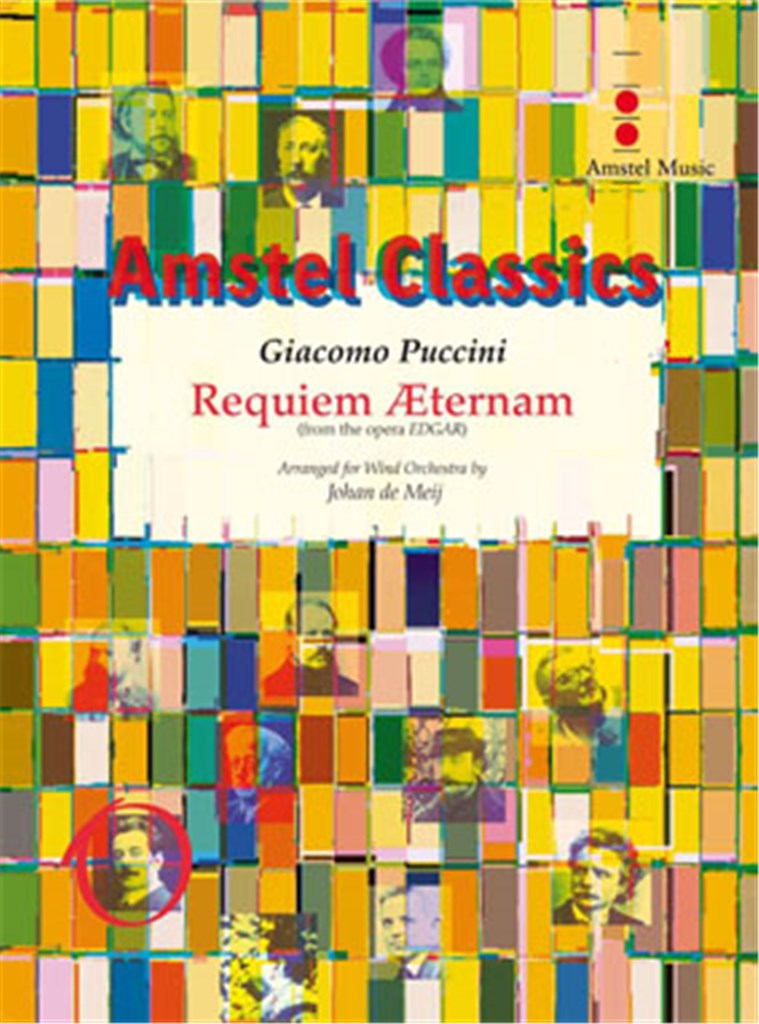 £68.00
£68.00Requiem Aeternam (from Edgar) (Concert Band - Score and Parts) - Puccini, Giacomo - De Meij, Johan
Giacomo Puccini was commissioned to write a second opera after the resounding success of his first, Le Villi. However, the original four-act, grand opera Edgar, to a libretto by Ferdinando Fontana, received a rather lukewarm reception at its premiere in La Scala in Milan in 1889. Initially, the work was only performed three times. Of all the planned performances in the subsequent two years, only one took place, in Lucca, Puccini's birthplace. There, the work was well received. Nevertheless, the composer decided to make drastic changes to Edgar the most radical being the reduction of the opera to three acts, as well as altering a few arias, characters and instrumental parts. In its revised form, the work was even less popular than before. The discarded fourth act later provided material for Tosca (the duet Amoro sol' per te), but Puccini never felt the need to defend Edgar as he did other less fortunate operas, such as La Rondine and Suor Angelica. On a piano excerpt for his female friend Sybil Seligman he even corrupted the title to 'E Dio ti Guarda da quest' opera' (may God preserve you from this opera). This did not prevent Arturo Toscanini performing the Requiem from the third act at Puccini's funeral in Milan Cathedral on 3 December 1924. The Requiem in the third act is being played when the long funeral procession carries the alleged body of Edgar, the confused young man hesitating between the love of the virtuous Fidelia and the exotic Tigrana. The mass hails Edgar as a hero, but a monk claims that he has betrayed his country for a few gold pieces. When the soldiers try to desecrate the body, they discover that the armor contains none. The monk reveals himself as Edgar. He wants to leave with his faithful Fidelia, but the vengeful Tigrana stabs him and kills Fidelia. Edgar grieves over the lifeless body of his beloved, while Tigrana is arrested and the people submerge into prayer. Duration: 3.30
Estimated dispatch 7-14 working days
